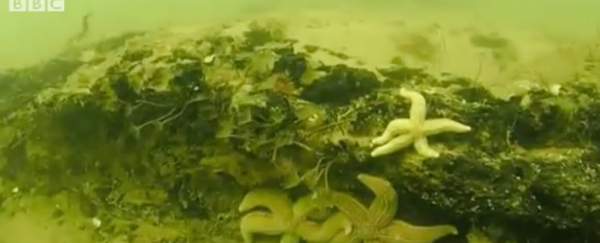Remnants of 10,000-year-old forest that once spanned thousands of acres and connected Great Britain with continental Europe have been discovered by British divers.
Dawn Watson was diving in the North Sea off the Norfolk coast in the UK - about 200 km northeast of London - when she made the unexpected discovery.
After being forced off her normal course by rough water, Watson continued swimming, and was eventually in the midst of large oak trees, some with branches measuring eight-metres-long, lying on the sea floor.
"To start with I actually thought it was a piece of wreck," Watson told the BBC . "It just looked like a piece of hull. It wasn't until I had a really close look that I realised it was actually solid wood."
Watson, whose air tank was nearing empty, had to turn around very quickly, and told the BBC she was very lucky to make the find: "If I'd been three or four metres to the right we'd never have seen it at all."
Watson runs a marine conservation program called Seasearch with her partner Rob Spray. The organisation's objective is to "map out the various types of sea bed found in the near-shore zone around the whole of Britain and Ireland."
Of course, it's unlikely they expected to find a prehistoric forest.
The pair, who have both returned to photograph and explore their ruined forest, say it likely became exposed after a big storm hit the coast in December 2013.
"You can see the damage it did on the surface, and underwater you have that on a grander scale," Spray told the BBC. "Thousands of tonnes of sand and gravel can just be sort of shuffled… it's no surprise that after an event like that you see sand stripped away."
The forest is believed to be part of an ancient land mass known as Doggerland, which once linked Great Britain to the rest of Europe, and disappeared under rising sea levels about 6,000 years ago.
For decades, fisherman in the North Sea have been dragging up bones and artifacts from that long-vanished world .
Once thought to be uninhabited, it is now suspected that Doggerland was settled by Mesolithic hunter-gatherers, probably in great numbers.
As the BBC reported, "by around 10,000 years ago, the area would still have been one of the richest areas for hunting, fishing and fowling in Europe."
Watson and Spray are now in the process of surveying the ancient forest, which has evolved into a kind of natural reef, and is home to all kinds of marine life.
